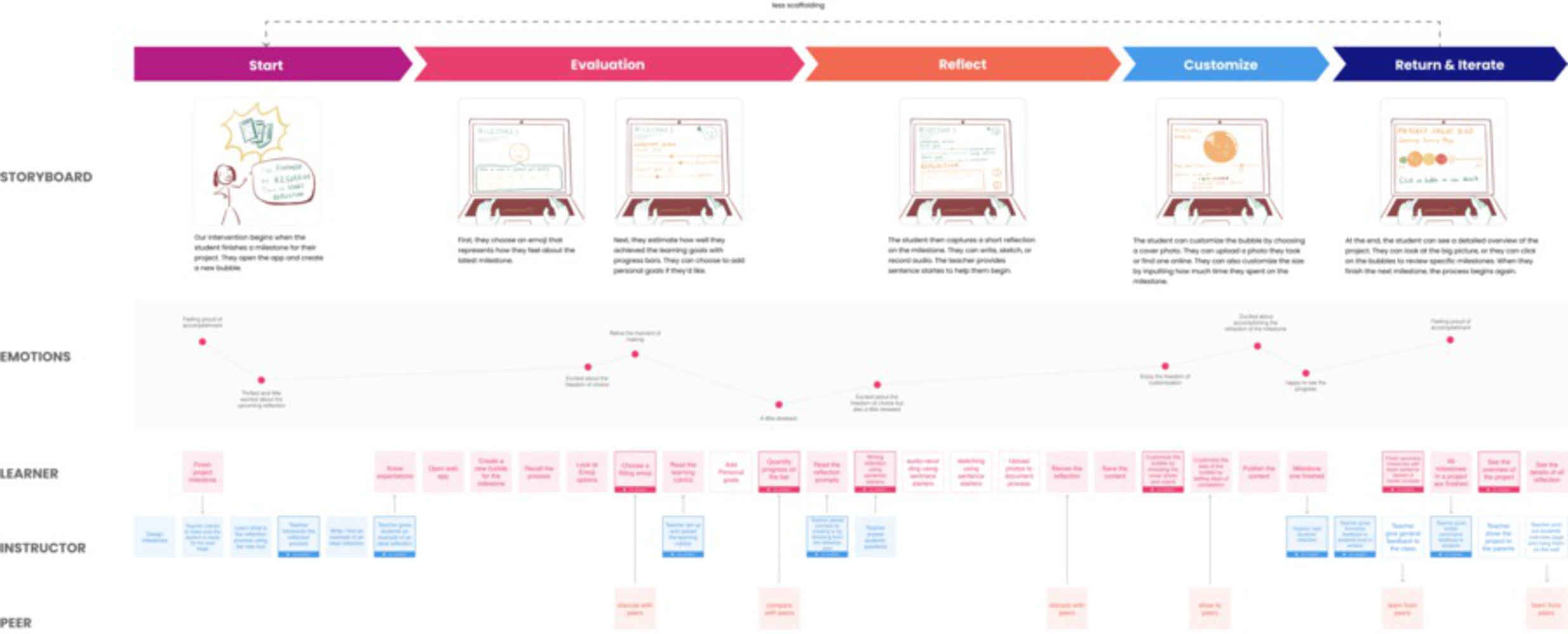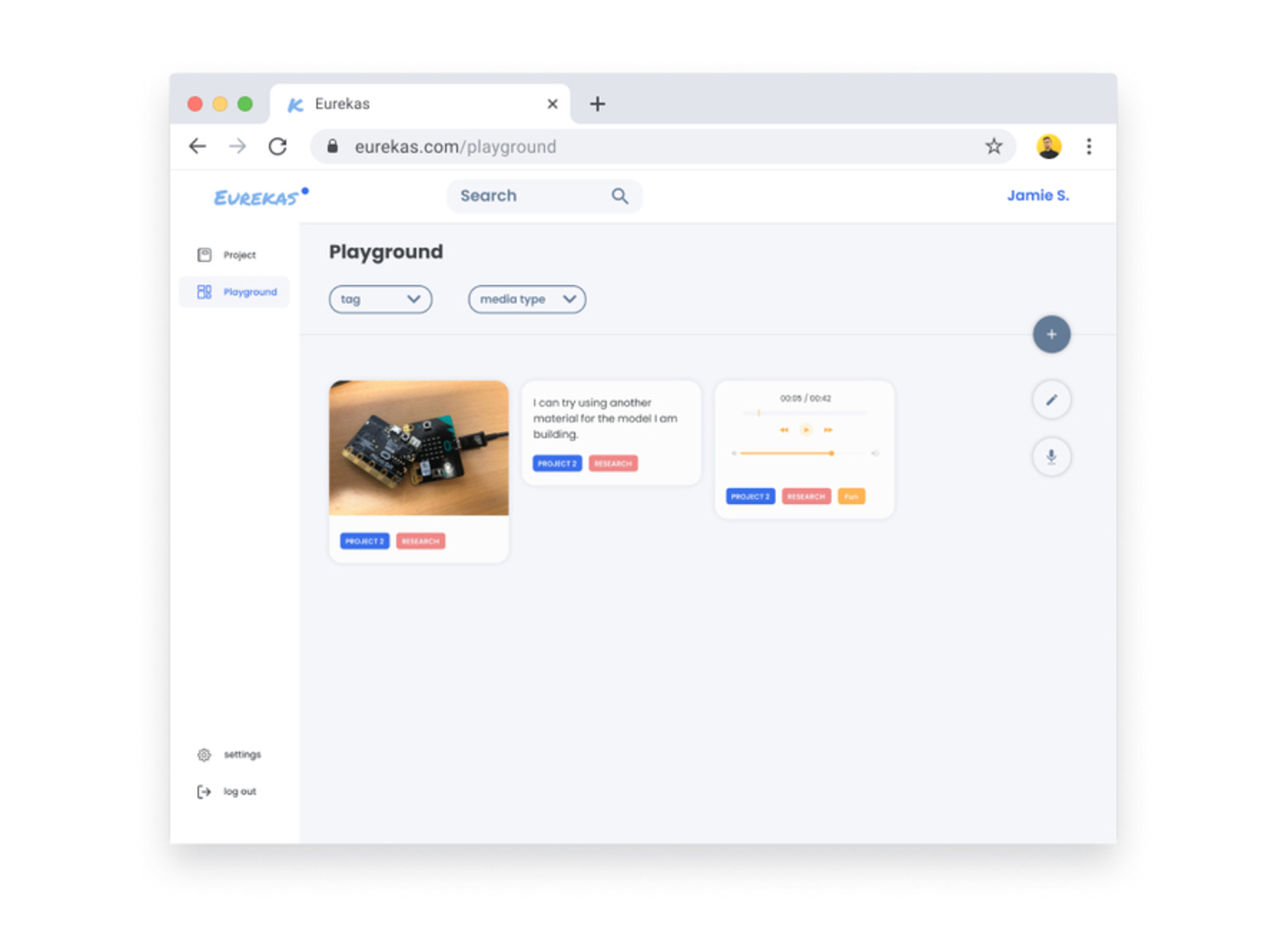By Anna Boyle, GyuEun Park, Miaojun Xu and Yu Zhao
I. Problem Statement
Kentucky Avenue School (KAS) is a Pittsburgh K8-12 school emphasizing a great deal on project-based learning and student portfolio making. Like many other schools, KAS also encounters problems when it comes to project-based learning.
In our discovery research phase, we identified two main problems facing the key stakeholders (teachers and students). We found that teachers struggle to integrate documentation into the workflow of the classroom due to time and attention constraints. Additionally, students’ approach to reflection is cursory and lacks intrinsic motivation. They perceive reflection and writing as stressful and just another school work.
Consequently, we propose our problem statement as the following: How might we align students' intrinsic motivations with the learning goals in the context of problem-based learning?



